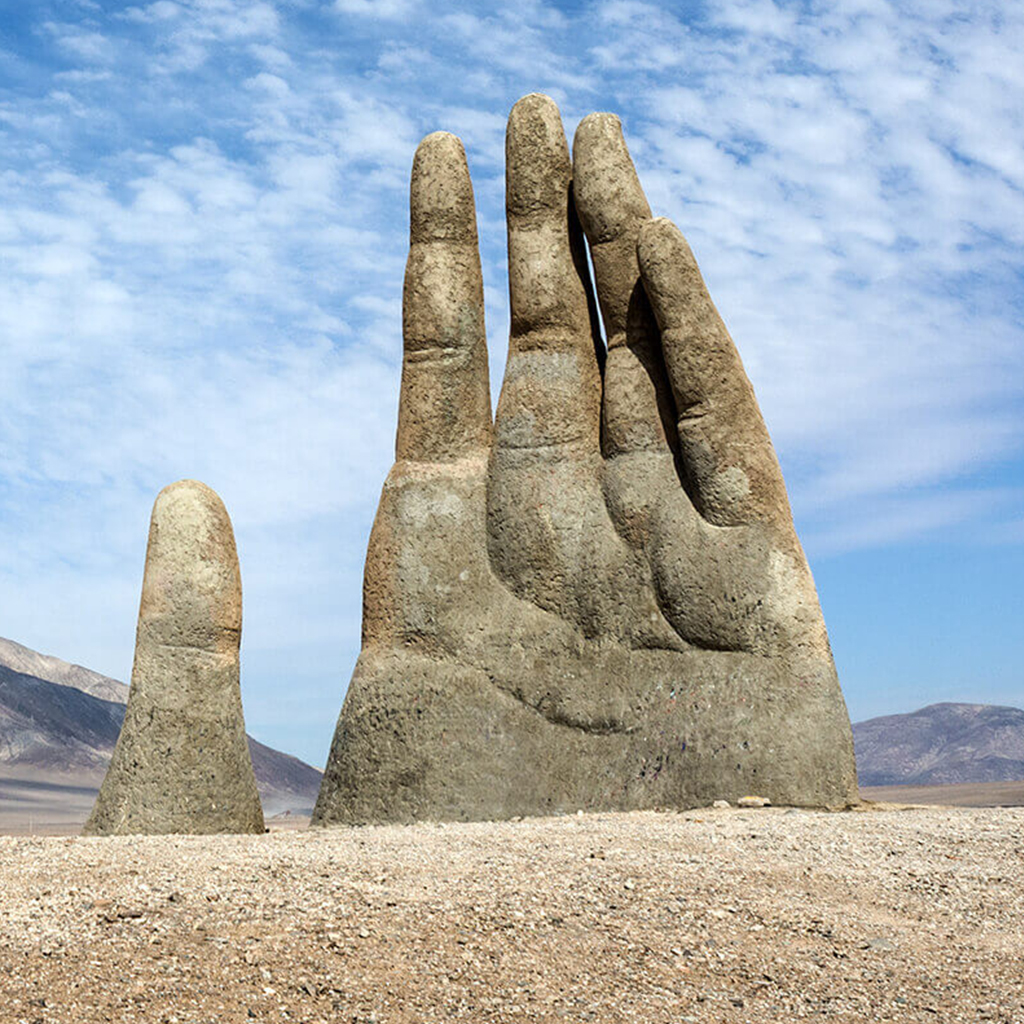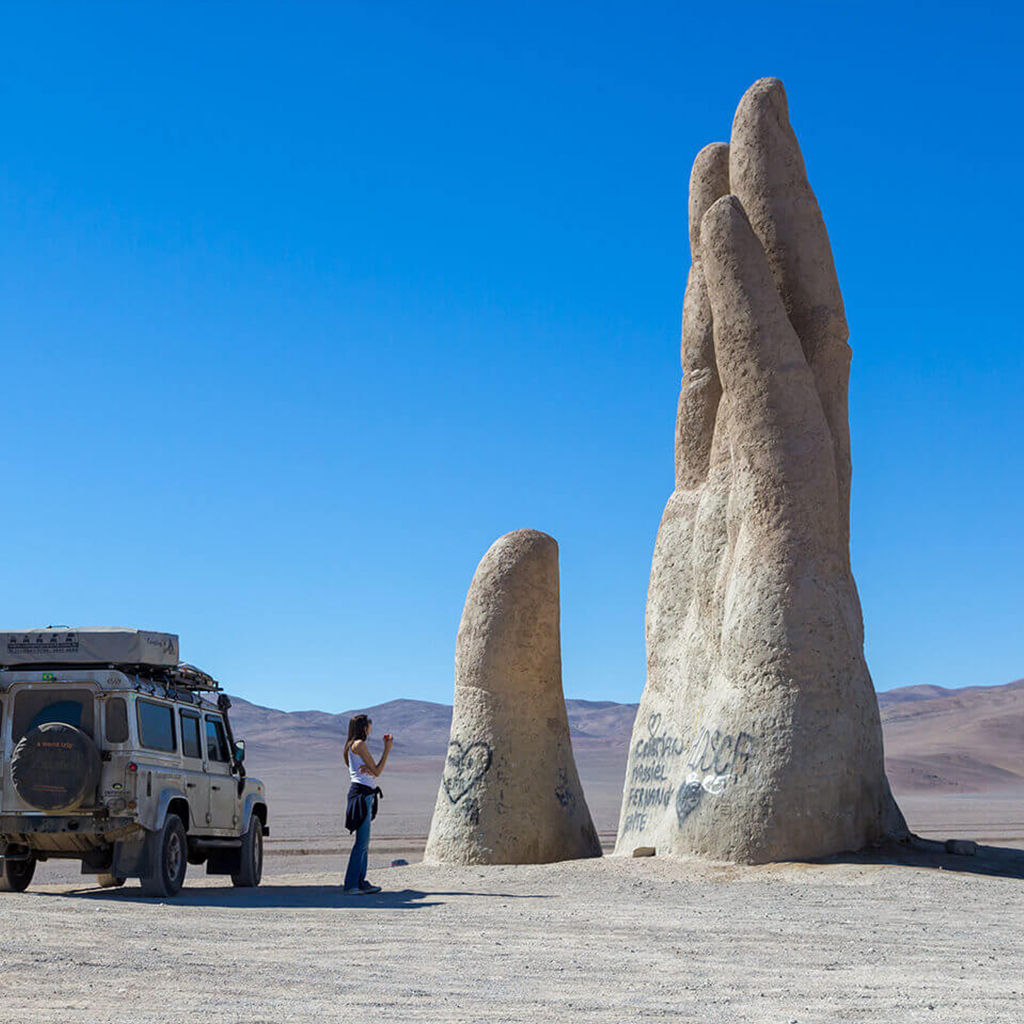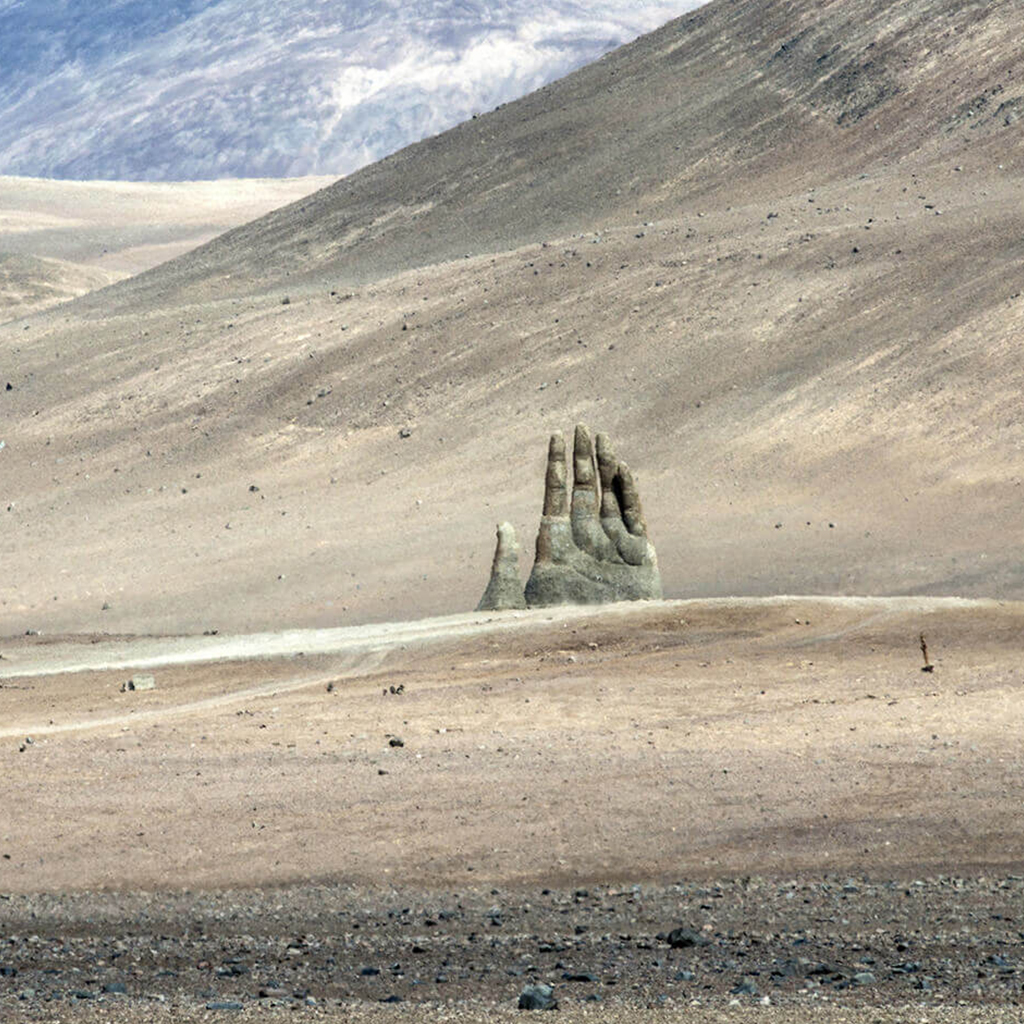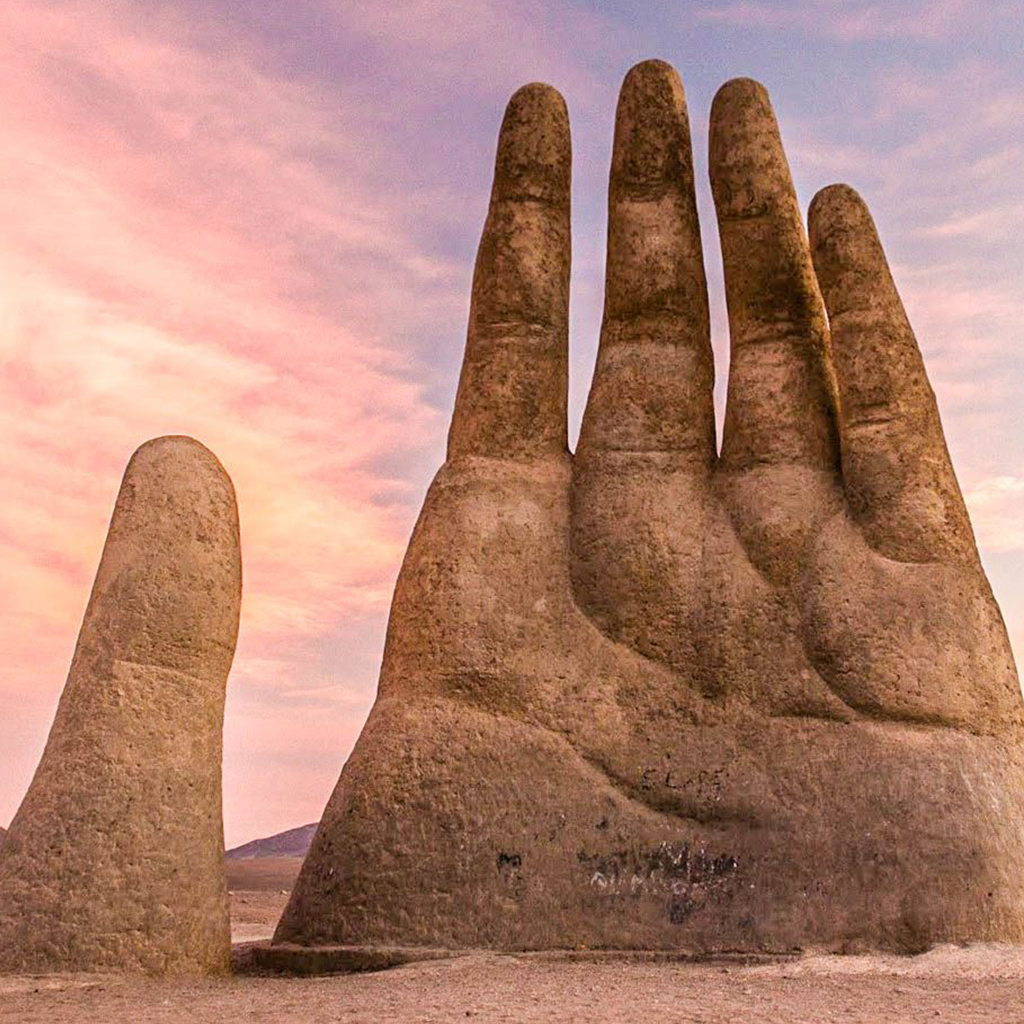The giant hand sculpture can be found in the Atacama Desert in Chile, one of the driest and most deserted places in the world. The Desert Hand, a 1992 sculpture by Chilean artist Mario Irarrázabal, gained notoriety after its creation.

The massive hand extending upward was meant to symbolize the sorrow, suffering, and loneliness that are inherent in being human. In the face of injustice and suffering all around the world, it pays homage to the frailties and failings of the human soul.

The sculpture is 11 meters tall and is located 1,100 meters above sea level. It is a massive and majestic statue which dominates the entire valley. It’s dry, barren and sparse. The otherworldly landscapes of northern Chile’s Atacama Desert could easily be from Mars.

It is the driest desert in the world outside of the polar regions, and its 40,500-odd square miles of red and burnt-orange plains stretch as far as the eye can see.
Driving through the desert can be disorienting, and, at first, weary travelers may mistake its most unusual monument for a mirage.

It rears up from the ground as if a giant is drowning in quicksand, reaching an outstretched hand in a desperate last plea for help. But on closer inspection, visitors will see that the “Mano del Desierto” – “Hand of the Desert” – is, in fact, very real.


The thumb and four fingers are an abrupt vertical interruption in the desert, a striking anomaly in the vast, otherwise uninterrupted flat swathes of sand.


The statue was made of iron and concrete to withstand the desert’s severe extremes, which include intense heat during the day and bitter cold at night. It is also plainly visible from a distance and is accessible by Route 5, the Pan-American Highway, which is 43 miles from Antofagasta.


Twice a year, the Antofagasta community organization that commissioned the hand gathers a group of employees and volunteers to scrub away six months’ worth of names and Spanish profanity.





